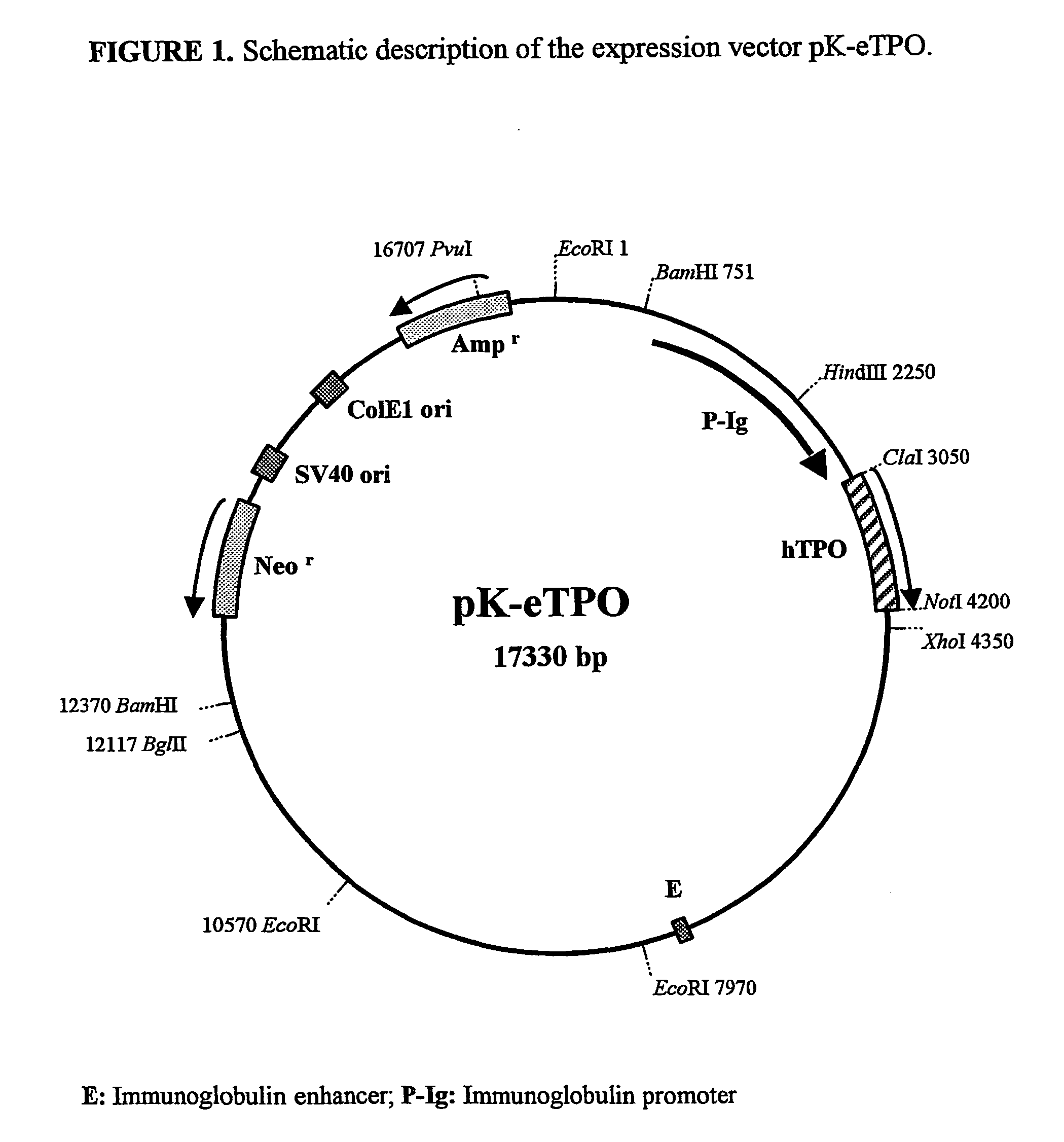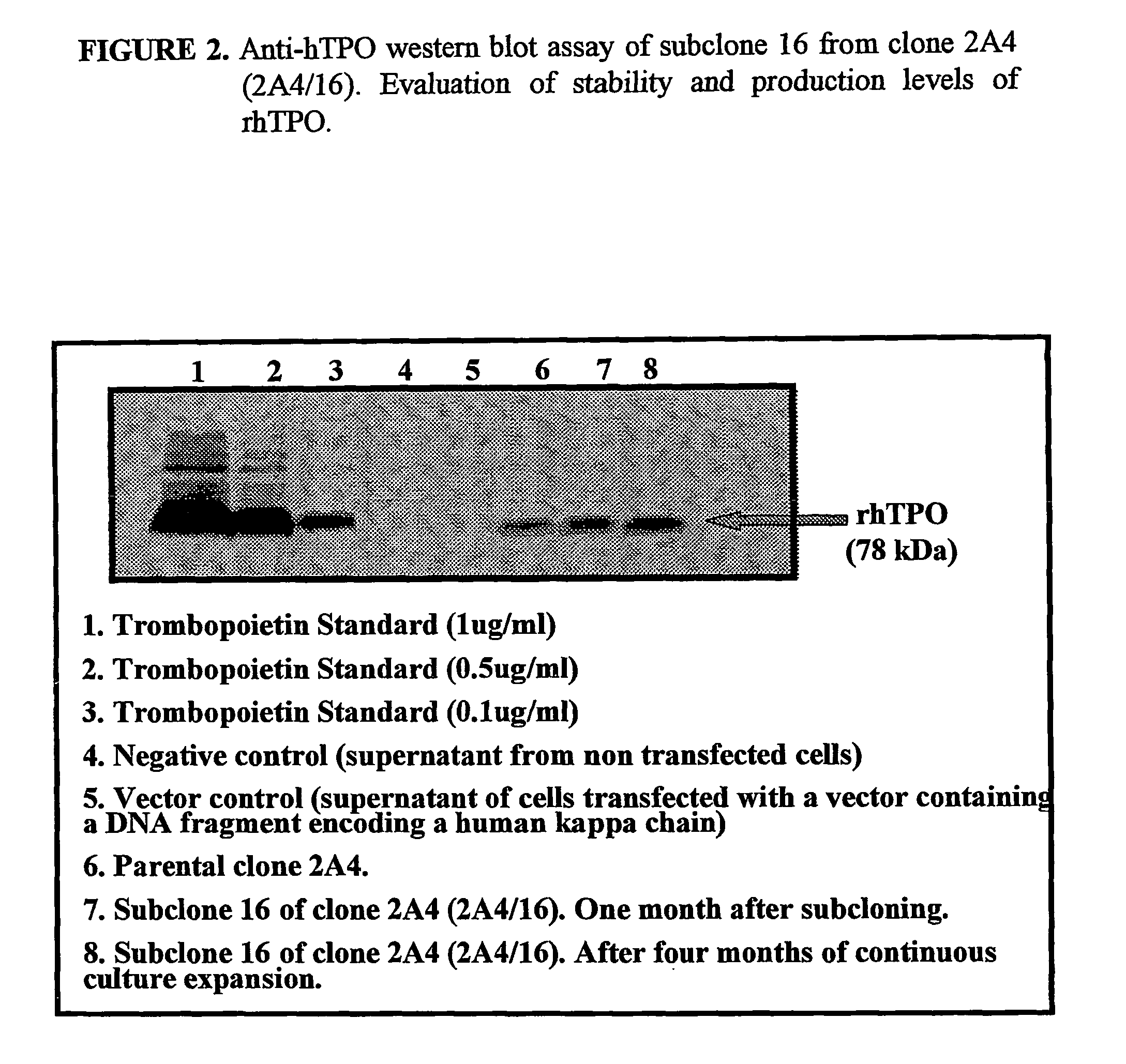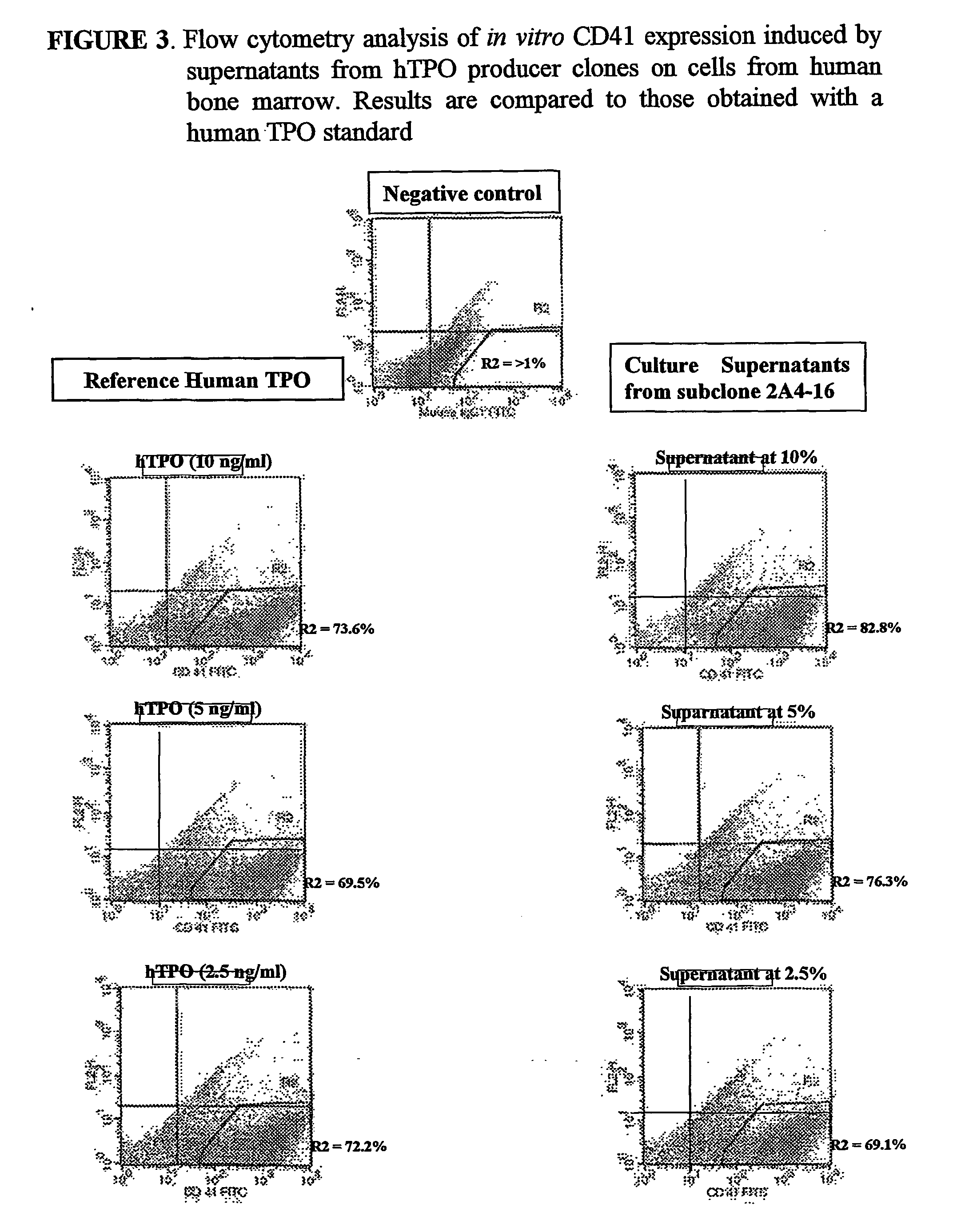Methods for preparing human thrombopoietin polypeptides by mammalian cell cultures
- Summary
- Abstract
- Description
- Claims
- Application Information
AI Technical Summary
Benefits of technology
Problems solved by technology
Method used
Image
Examples
example 1
[0041] mRNA obtained from hepatic tissue of a normal adult in order to obtain specific cDNA of hTPO. A fragment of hepatic tissue from a normal adult (50 mgrs) was processed in order to isolate total RNA. This process was performed applying classical methods of extraction with guanidine thiocyanate phenol-chloroform. The purity and concentration of total RNA was determined by 260 / 280 absorbance ratio.
example 2
[0042] cDNA synthesis (reverse transcription) of hTPO specific mRNA. Synthesis of the first stand of cDNA by reverse transcription, was performed from 5 .mu.g of total RNA, using synthetic Oligo(dT).sub.12-18 and Reverse Transcriptase (SuperScript.TM. II, Gibco-BRL-Life Technologies). The assay was performed in a total volume of 20 .mu.l containing: 4 .mu.l buffer 5.times.(250 mM Tris-HCl pH 8.3; 350 mM KCl; 15 mM MgCl.sub.2; 0.1 M DTT); 1 .mu.l of Oligo (dT) 500 .mu.g / ml; 2 .mu.l DTT 0.1 M.; 1 .mu.l 10 mM dNTPs; 5 .mu.g total ARN and completing with 20 .mu.l H.sub.2O.
example 3
[0043] Amplification of the specific CDNA encoding the complete hTPO. Amplification of the sequence of interest by "nested PCR" techniques (Polymerase chain reaction). This is done by designing a double pair of primers and a combination of thermostable DNA polymerases in order to amplify the sequence encoding the mature protein that has high specificity and fidelity. In that sense, a high fidelity amplification system was used. This system was composed by the adequate mixture of Taq polymerase and Pow DNA polymerase (EHF; Expand.TM. High Fidelity PCR System, Boehringer Mannheim). The sequence of primers used in the two amplification rounds are described in Table II. The amplification reactions were performed in a total volume of 100 Ill by adding:
[0044] 2 .mu.l (dNTPs 200 .quadrature.M)
[0045] 3 .mu.l (10 mM forward primer)
[0046] 3 .mu.l (10 mM reverse primer)
[0047] 10 .mu.l (buffer10X)
[0048] 0.75 .mu.l (Thermostable polymerases EHF)
[0049] 5 .mu.l (cDNA)
[0050] 76.25 .mu.l (H.sub.2O)
[...
PUM
 Login to View More
Login to View More Abstract
Description
Claims
Application Information
 Login to View More
Login to View More - R&D
- Intellectual Property
- Life Sciences
- Materials
- Tech Scout
- Unparalleled Data Quality
- Higher Quality Content
- 60% Fewer Hallucinations
Browse by: Latest US Patents, China's latest patents, Technical Efficacy Thesaurus, Application Domain, Technology Topic, Popular Technical Reports.
© 2025 PatSnap. All rights reserved.Legal|Privacy policy|Modern Slavery Act Transparency Statement|Sitemap|About US| Contact US: help@patsnap.com



